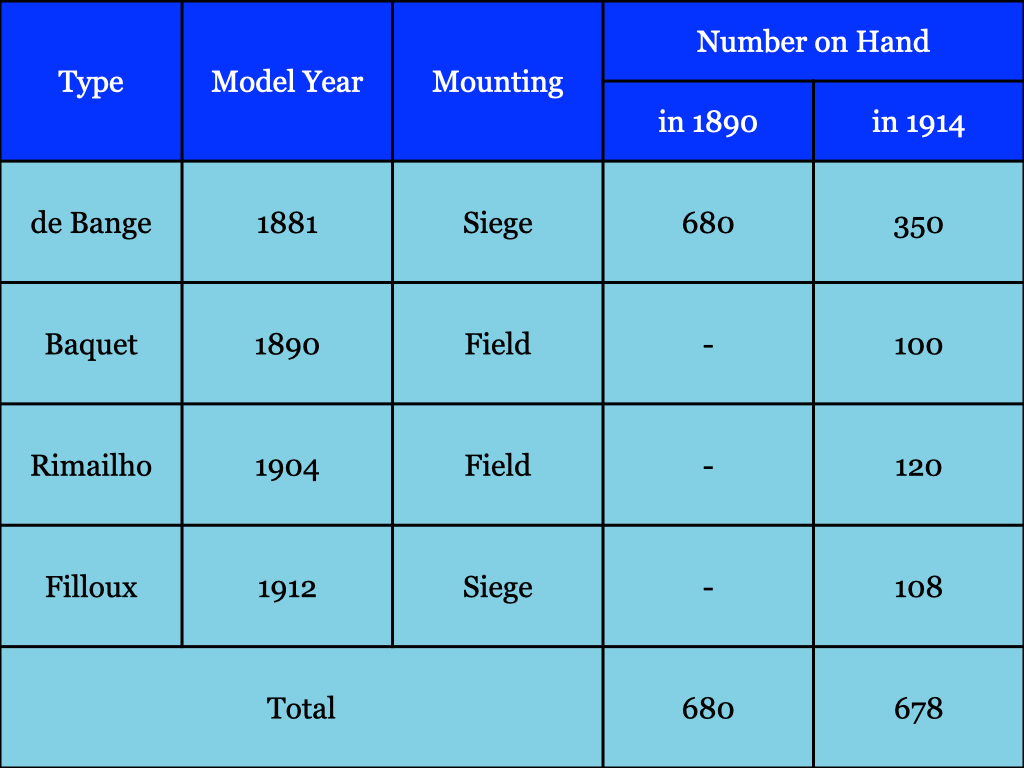Heavy Field Howitzers (X)
The two Baquet Field Howitzers
In 1890, the French Army possessed 680 or so light siege howitzers, all of which were 155mm canons courts (“short guns”) of the model adopted in 1881. Between that year and the start of the First World War, the German armies acquired some 1,700 heavy field howitzers, at least 402 of which were provided with on-carriage recoil-absorbing devices.1 In the same period, the arsenals of the French Army built 220 heavy field howitzers and 120 light siege howitzers.2 However, as each of the new weapons made use of a barrel taken from one of the pieces existing in 1890, the fifteen years prior to the outbreak of the First World War saw no increase in the number of 155mm howitzers available to the French Army.
Like other siege artillery pieces of the système de Bange, the 155mm howitzer adopted in 1881 had been designed to be used with a firing platform. While such a base allowed the fitting of a recoil-absorbing mechanism, building it required so much time that it made little sense to employ the Model 1881 howitzer in situations other a siege.
The first attempt to overcome this limitation took the form of the howitzer designed by Louis Baquet. Adopted in 1890, the weapon placed the barrel of the Model 1881 howitzer on a “small mounting” ( petit affût) that, in turn, was connected to a “large mounting” (grand affût) that provided many of the same services as a firing platform. Thus, rather than having to build (or assemble) a platform at each new firing position, the crew of the Baquet howitzer was ready to fire as soon as they removed the wheels from the grand affût.
The following page provides links to all articles in this series:
Ernst von Wrisberg, Wehr und Waffen, (Leipzig: K.F. Koehler, 1922), page 82
The tale of the different types of 155mm howitzers available to the French Army at the start of World War I is told by Émile Rimailho in his Artillerie de Campagne, (Paris: Gauthier Villars et Cie., 1924), pages 69-74 and 107-112. The inventory of such weapons in 1914 is provided by Louis Baquet, Souvenirs d’un Directeur d’Artillerie, (Paris: Charles-Lavauzelle, 1921), pages 120 and 21.





